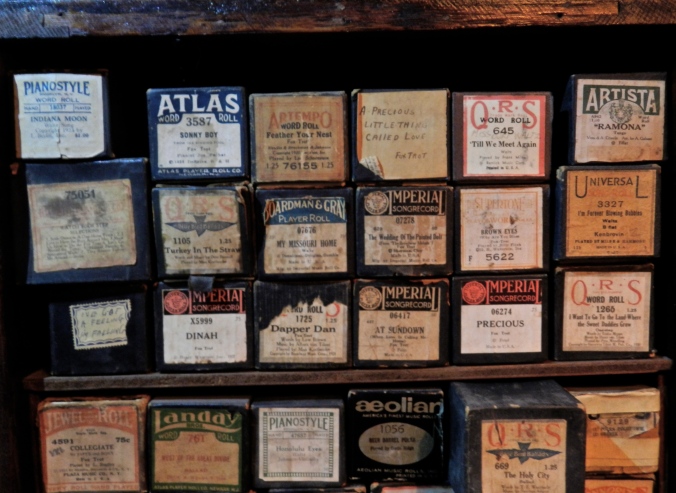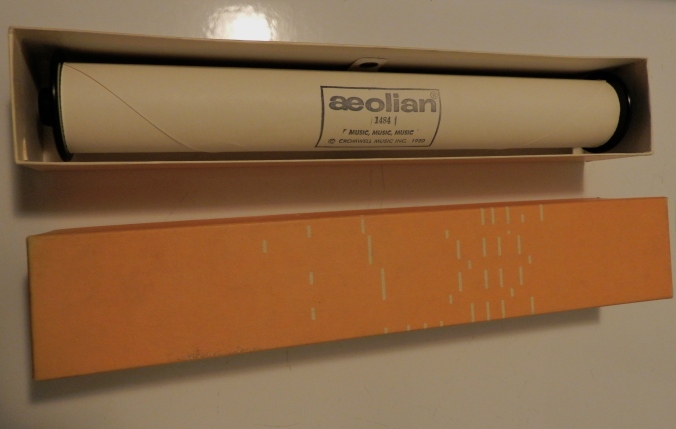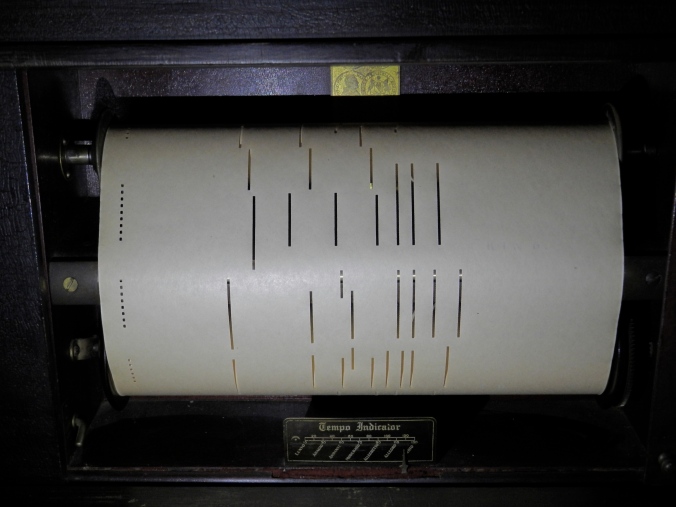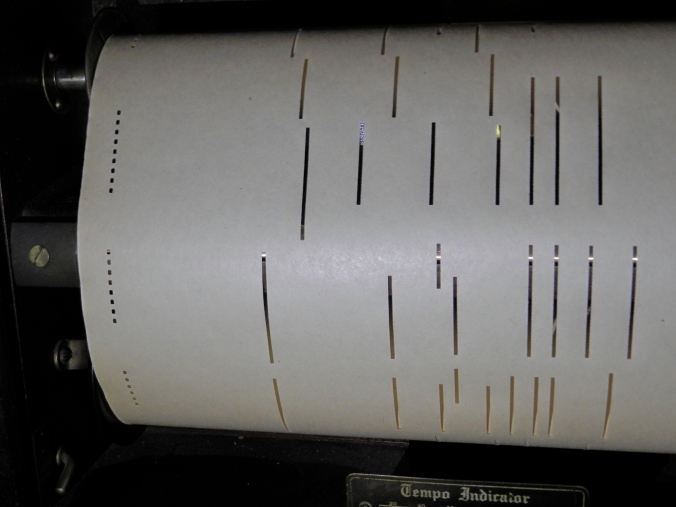My name is Catherine Rubino. I am interning this spring in the Archives department of Historic Huguenot Street. I am also a senior studying English Literature and Journalism at SUNY New Paltz.
This week’s object serves as a companion piece to the player piano previously mentioned. As opposed to a single object, Historic Huguenot Street has obtained over 200 different rolls that can be played on our player piano. Each roll is individually produced with a single song and packaged with its own rectangular box, which stir up visions of Harry Potter in Ollivander’s Wand Shop.

When player pianos were in their height of popularity, manufacturers would record pianists on pianos with keys and pedals that were equipped with electrical contacts.1 A series of pens would mark on a master roll the notes played. These hand played rolls were played upon reproducing pianos such as our player piano located in the Deyo House. For pedal operated player pianos, the scrolls were made from transcriptions of sheet music. These “metronomic” or “straight cut” rolls were marked by a technician on a paper stencil.



Player piano rolls are still being produced today. One of the largest manufacturers, QRS, has been in business for over a hundred years. Many of the rolls in our collection are QRS rolls. However, new music roll producers are currently popping up as well, bringing together the player pianos of the past with the music of today. Popular songs such as “Bohemian Rhapsody” and even the theme song to Frozen can be played on player pianos through new recording techniques, which involve the use of computers.
Original rolls can be re-cut or copied. The process involves scanning the original roll through a reading machine where a computerized master is used to create as many copies as desired. Electric pianos can create new hand-played rolls through the use of MIDI or Musical Instrument Digital Interface. The MIDI recording can be converted to a perforator control file that is able to create new rolls. Roll manufactures can also choose to create new arranged rolls from transcriptions of sheet music as had previously been done where each note is entered individually into a MIDI sequencer program.
All of these techniques from the past and the present can be used to enjoy the magic of the player piano. Rolls such as the ones in our collection have allowed people to sit back and relax while the player piano has done all the work for over a century, and it seems they will continue to do so for years to come.
1 “Early Piano Rolls.” The Player Piano Page. n.d. Web. 19 Feb 2016.